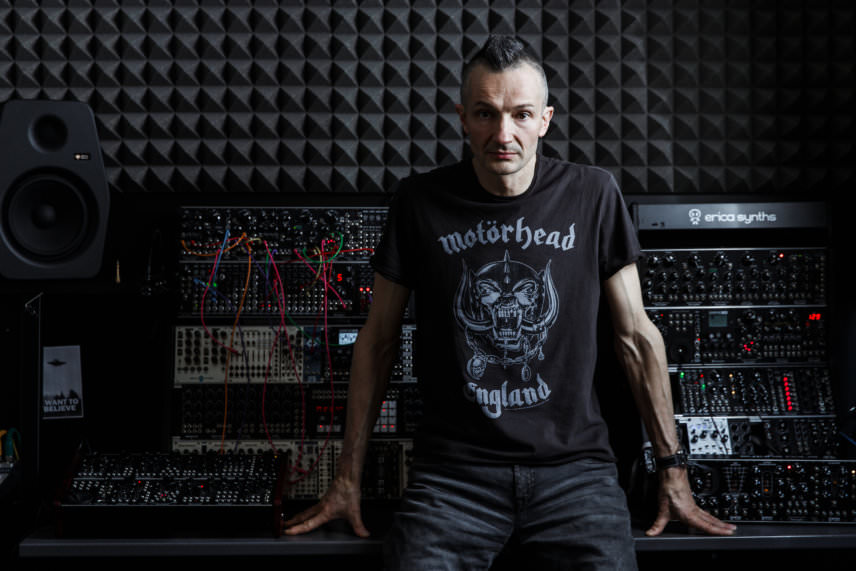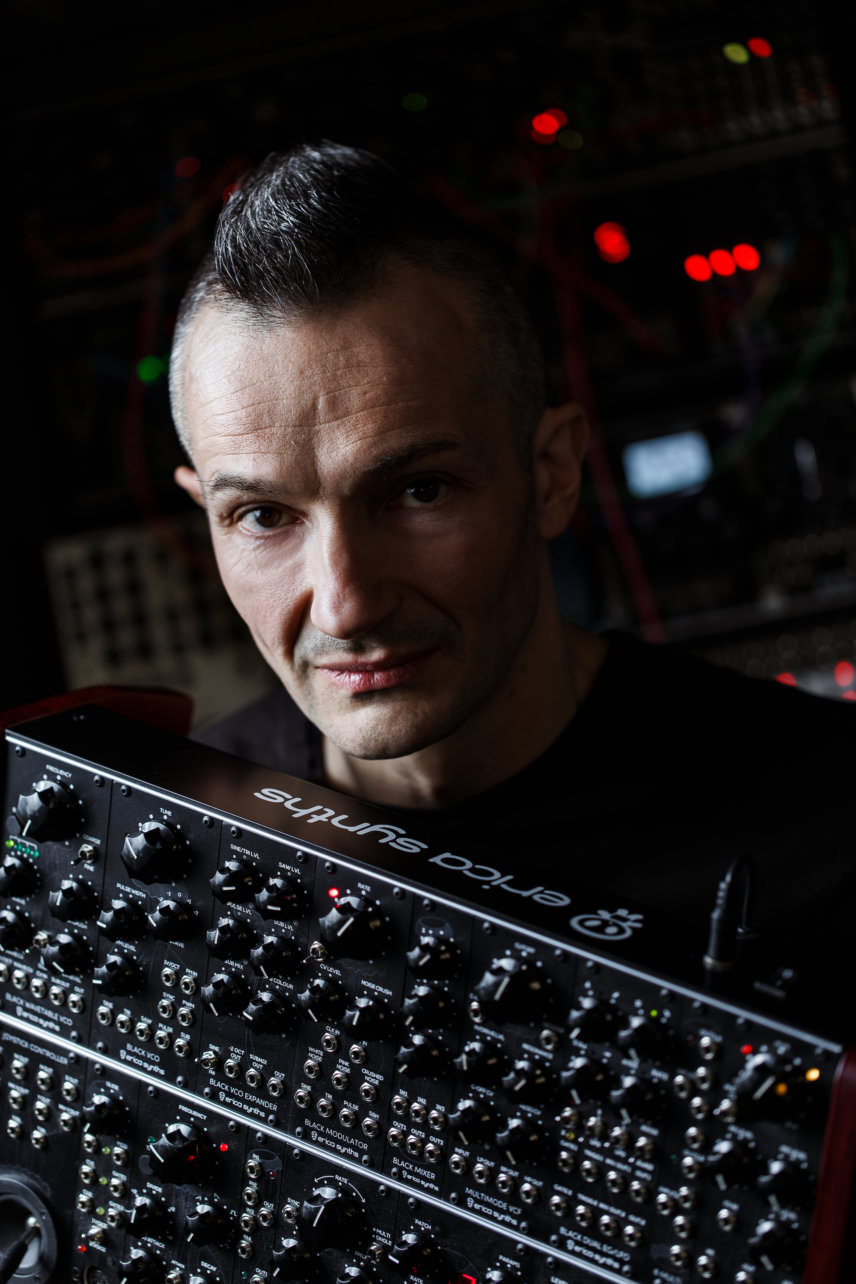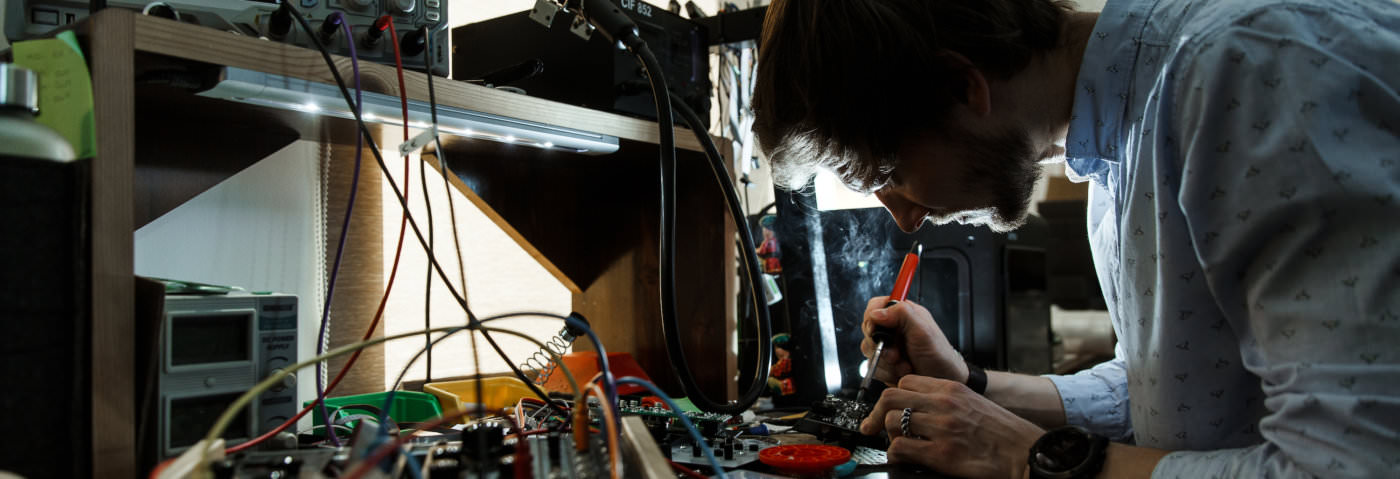The Erica Synths founder talks about his native Riga, Latvia as a hub for both tech and electronic music instrument startups and where Eurorack is heading in the future.
Ask most folks about Riga, Latvia, and they might know it as a major Baltic port city and an unlikely centre for basketball. Yet, beneath the surface, the Latvian capital is increasingly a major player in music hardware and software, and a hub for tech startups. One company, Erica Synths, a maker of boutique Eurorack synth modules, is simultaneously both of these things.
Founded in 2014 by Girts Ozolinš, Erica Synths has in the last half decade produced some of the most iconic modules and systems in the Eurorack category. In the last year alone, Erica Synths has released a number of new products, including the Techno System, a modular drum machine that Ozolinš and his team see as a beat sequencer that, with its extensive patching options, can extend far beyond the techno genre. Erica Synths also recently unveiled Black Classic System II, a counterpoint of sorts to the Techno System—a machine envisioned for adventurous sound design, from spaced-out melodic excursions to massive basslines.
In a 2018 interview, Ozolinš suggested that Latvia’s current hip status amongst tech startups and electronics makers has more historical origins. Before World War II, Latvia was home to Minox, the maker of the world’s smallest spy camera, and the VEF factory, which manufactured one of Europe’s best radio receivers. But, when the USSR absorbed Latvia, its technological prowess regressed to the stone age, though the technological and electronics know-how remained. This, as Ozolinš said, may account for its re-emergence as a European hub for tech innovation.
In a recent chat with Attack, Ozolinš talked about Riga’s hacker mentality, both in and outside of music hardware and software. He also talked about the early days of Erica Synths, the company’s current offerings, and where he sees the team heading in the future.

Attack: Tell us about Riga when it comes to technology. And not just music technology, but other tech development, from hardware to software.
Girts: Riga, as the largest city in the Baltics and a major hub in Northern Europe, serves as home base for many software and hardware start-ups. Having this status, it has a major role in the economic activity in the region, but also when it comes to start-ups. It’s home to all four start-up accelerators operating in Latvia: Start-up WiseGuys (B2B focus), Overkill Ventures, Buildit (hardware focus) and Commercialization Reactor (deeptech focus).
That said, there’s support available for a wide range of industries. If you are counting numbers, then software companies are more numerous, due to the large pool of IT specialists in the Riga.
What’s unique about Riga as a startup city?
The uniqueness in Riga can be seen in many aspects, and that makes it attractive for start-ups. In recent years, the ecosystem here has been booming and the government recognizes the role it must play supporting the environment.
For instance, the state support programs, like Startup Law, benefit eligible start-ups to receive financial support and tax reliefs for their high-cost employees. The ecosystem in the city has been active from all sides, with business incubators in top universities, hackathons being held all year long, major start-up events such as Techchill and Digital Freedom Festival, and so on.
Besides this support, the city itself serves as a convenient place to start a business. There is a highly skilled workforce, the biggest airport in the region is just a 15-minute drive from the city centre, and there are cheaper living costs than in Western Europe and good connectivity with foreign markets. Therefore, Riga is a good starting point for building big ideas.
What did you and other members of Erica Synths do before founding the company?
In the early 90s I was a science and math teacher at several schools, but in the 20 years before founding Erica Synths I was in advertising. Between 2005 and 2015, I was running one of the largest advertising agencies in Latvia, HAVAS network affiliate.
Janis, our engineer, was involved in a project in the Institute of Nuclear Physics, and Marta had just graduated from the Academy of Music and was looking for a place to work. Kodek was a professional musician and his daytime job was handling IT repairs in a smaller city where he used to live. As soon he moved to Riga in 2015, he joined Erica Synths, and Eliza was involved in several arts and culture projects.
given the experimental nature of Eurorack, most likely, different kinds of human interactive interfaces will be developed to provide creative and yet unseen ways of performing live..
What inspired you to create Erica Synths’ modular synths?
I was actively involved in the DIY scene since about 2009 and built almost all of the modular projects that were available back then. Some developers (like Ray Wilson from MFOS) complained that they needed to develop something new, since I had built almost everything on their site. Building all these DIY projects, I realized that I can contribute somehow to the scene, so in 2012 I started to sell the first DIY kit on Muffwiggler—the Polivoks VCF. As demand began to grow, in 2014 I registered the company as Erica Synths.
What were the challenges of starting a synth making company in Riga? Were there other electronic music instrument makers there that you looked to for inspiration, or did you have to figure everything out on your own?
I believe Latvia has the best infrastructure for electronics manufacturing in the world. But when I began manufacturing modules (not only DIY kits), I needed to figure out everything myself since there were no similar companies around. And honestly, by today’s standards, the first modules were a complete disaster—I mean, how they were built. They had unique functionality, but they were not manufacturing-ready.
Over time, I accumulated more experience and contacts, and now we have an excellent manufacturing and logistics chain. And more companies, such as Gamechanger Audio, started to appear here in Riga, and I’m happy to share my experiences so that they have shortcuts.
Can you tell me about the Techno System, as far as why you decided to make a Eurorack modular beat-making rig?
The Techno System is partly a collaboration project with a French company e-licktronic, developers of the NAVA and YOCTO DIY drum synthesizer kits. I built their kits, and felt that they deserved proper enclosures, which were not available. So, we developed one and put it in our web shop. After some time, e-licktronic contacted us and proposed to develop a modular version of their drum synths. So e-licktronic developed Drum Sequencer, Bass Drum, Snare Drum, Toms, Hi-Hats A, Clap, Cowbell, and we developed all the other modules in the Techno System before putting all the modules into manufacturing.
Also, a lot of modular systems are dedicated to live techno performance setups, therefore we felt strong potential there. And, at the end of the day, we love techno. I must say that the Techno System is not limited to techno production, though. With creative patching, one can end up in any rhythm-based genre or even drone music. Imagination is the only limitation.

What is unique about the Techno System, both inside and outside of the modular world?
It sounds great, and unlike standalone drum machines and grooveboxes it has extensive modulation possibilities and that tactile feedback of modular synths. The Techno System is a collection of virtually all modules one may wish to have for electronic and experimental music production; and, most importantly, live performance.
How would you describe the Black Classic System II? It seems to complement the Techno System in a way.
The Black System II is a different kind of beast—it’s more of a sound design tool that can lead the user to previously unexplored territories of sound design, while at the same time maintaining control over the process. But, of course, it’s also great for live performances.
If one needs rich synth leads, massive basslines, cosmic sounds or impressive drones in stereo, the Black System II—a well-considered selection of Black Series modules—is the way to go. It can be used with keyboards, MIDI sequencers or as a standalone unit. And, at the moment, we are developing an extended version of it, Black System III, that will also include the upcoming Black Sequencer and Black Spring Reverb modules.
Are both of these systems in response to a growing trend to perform live?
All Erica Synths modules are designed with a superior user interface in mind. We prefer (most of the time) not to save on module size in favor of improved usability. With Black Series modules, users know that the big knob makes the most difference; therefore, they are great for live performance.
Where do you see Erica Synths going next as far as synthesis and sound?
At the moment, we have most of the important modules in place to build really powerful systems. As a next step, we are developing a few modules that will allow us to interface modular synths with external instruments.
Black Input Module is an advanced instrument preamp, envelope follower, and most importantly, a pitch tracker that converts pitch from the instrument to CVs. For our other modular projects, we have some standalone instruments in the late prototype stage and some are in development. We have accumulated a lot of know-how both in development and manufacturing procedures with modules, so now it’s time to spread our instruments into other categories.
one could spend a lifetime patching a comparably small system looking for new sounds.
How do you see the Eurorack module category evolving in the near future?
It appears that nowadays all the big electronic music instrument corporations make their synthesizer interfaces compatible
At the same time, at this year’s Superbooth exhibition, it appeared that there are no big innovations left within the Eurorack format. Most of the module categories are already covered for the analogue purists, for the experimental musicians, and everything in between and beyond. But given the experimental nature of Eurorack, most likely, different kinds of human interactive interfaces will be developed to provide creative and yet unseen ways of performing live.
Do you think there are sounds yet to be discovered in modular synthesis, whether by designing new synth modules or by the musicians themselves?
Because of the wide variety of modules available right now, producers get spoiled and many musicians don’t even dig deep enough into sound design. More and more people choose to use dedicated function modules like Bass Drum, Hi Hats, Sample Drum, DSP-based effects and so on. At the moment, Erica Synths have several affordable products in development that aim to bring Eurorack users back to the origins of modular synthesis, where combinations of simple modules are used in order to create more advanced sounds.
A bold example is Karlheinz Stockhausen, who created his masterpieces using only noise generators, a few sine wave oscillators, and then editing everything on a reel-to-reel recorder. Modern humans have neither the time nor the patience to explore. For example, a 5U system in our showroom has 94 outputs and 104 inputs, and it’s possible to patch it in 7 x 10159 different ways (for comparison, there are 1 x1025 stars in the known universe)—one could spend a lifetime patching a comparably small system looking for new sounds.
